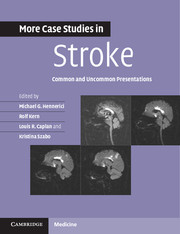40 results
5 YEARS OF ION-LASER INTERACTION MASS SPECTROMETRY—STATUS AND PROSPECTS OF ISOBAR SUPPRESSION IN AMS BY LASERS
-
- Journal:
- Radiocarbon / Volume 64 / Issue 3 / June 2022
- Published online by Cambridge University Press:
- 14 September 2021, pp. 555-568
- Print publication:
- June 2022
-
- Article
-
- You have access
- Open access
- HTML
- Export citation
Motivational and cognitive factors linked to community integration in homeless veterans: study 1 – individuals with psychotic disorders
-
- Journal:
- Psychological Medicine / Volume 52 / Issue 1 / January 2022
- Published online by Cambridge University Press:
- 10 June 2020, pp. 169-177
-
- Article
- Export citation
Motivational and cognitive factors linked to community integration in homeless veterans: Study 2 – clinically diverse sample
-
- Journal:
- Psychological Medicine / Volume 51 / Issue 16 / December 2021
- Published online by Cambridge University Press:
- 29 May 2020, pp. 2915-2922
-
- Article
- Export citation
Transference-focused psychotherapy for borderline personality disorder: Change in reflective function
-
- Journal:
- The British Journal of Psychiatry / Volume 207 / Issue 2 / August 2015
- Published online by Cambridge University Press:
- 02 January 2018, pp. 173-174
- Print publication:
- August 2015
-
- Article
-
- You have access
- HTML
- Export citation
Section 1 - Common cases of stroke
-
- Book:
- More Case Studies in Stroke
- Published online:
- 05 June 2014
- Print publication:
- 15 May 2014, pp 11-38
-
- Chapter
- Export citation

More Case Studies in Stroke
- Common and Uncommon Presentations
-
- Published online:
- 05 June 2014
- Print publication:
- 15 May 2014
Index
-
- Book:
- More Case Studies in Stroke
- Published online:
- 05 June 2014
- Print publication:
- 15 May 2014, pp 169-172
-
- Chapter
- Export citation
List of contributors
-
-
- Book:
- More Case Studies in Stroke
- Published online:
- 05 June 2014
- Print publication:
- 15 May 2014, pp ix-xii
-
- Chapter
- Export citation
More Case Studies in Stroke - Title page
-
-
- Book:
- More Case Studies in Stroke
- Published online:
- 05 June 2014
- Print publication:
- 15 May 2014, pp iii-iii
-
- Chapter
- Export citation
Introduction:approach to the patient
-
- Book:
- More Case Studies in Stroke
- Published online:
- 05 June 2014
- Print publication:
- 15 May 2014, pp 1-10
-
- Chapter
- Export citation
Abbreviations
-
- Book:
- More Case Studies in Stroke
- Published online:
- 05 June 2014
- Print publication:
- 15 May 2014, pp xiv-xvi
-
- Chapter
- Export citation
Contents
-
- Book:
- More Case Studies in Stroke
- Published online:
- 05 June 2014
- Print publication:
- 15 May 2014, pp v-viii
-
- Chapter
- Export citation
Section 3 - Stroke mimics
-
- Book:
- More Case Studies in Stroke
- Published online:
- 05 June 2014
- Print publication:
- 15 May 2014, pp 141-168
-
- Chapter
- Export citation
Copyright page
-
- Book:
- More Case Studies in Stroke
- Published online:
- 05 June 2014
- Print publication:
- 15 May 2014, pp iv-iv
-
- Chapter
- Export citation
Section 2 - Uncommon cases of stroke
-
- Book:
- More Case Studies in Stroke
- Published online:
- 05 June 2014
- Print publication:
- 15 May 2014, pp 39-140
-
- Chapter
- Export citation
More Case Studies in Stroke - Half title page
-
- Book:
- More Case Studies in Stroke
- Published online:
- 05 June 2014
- Print publication:
- 15 May 2014, pp i-ii
-
- Chapter
- Export citation
Preface
-
-
- Book:
- More Case Studies in Stroke
- Published online:
- 05 June 2014
- Print publication:
- 15 May 2014, pp xiii-xiii
-
- Chapter
- Export citation
Contributors
-
-
- Book:
- The Cambridge Companion to Shakespearean Tragedy
- Published online:
- 18 December 2013
- Print publication:
- 08 August 2013, pp viii-viii
-
- Chapter
- Export citation
Effect of antidepressive therapy on retinal contrast processing in depressive disorder
-
- Journal:
- The British Journal of Psychiatry / Volume 201 / Issue 2 / August 2012
- Published online by Cambridge University Press:
- 02 January 2018, pp. 151-158
- Print publication:
- August 2012
-
- Article
-
- You have access
- HTML
- Export citation
Contributors
-
-
- Book:
- Multiple Sclerosis Therapeutics
- Published online:
- 05 December 2011
- Print publication:
- 20 October 2011, pp viii-xii
-
- Chapter
- Export citation

